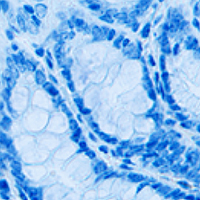Seasonal expressions of GPR41 and GPR43 in the colon of the wild ground squirrels (Spermophilus dauricus)

Accepted: 2 January 2022
HTML: 24
All claims expressed in this article are solely those of the authors and do not necessarily represent those of their affiliated organizations, or those of the publisher, the editors and the reviewers. Any product that may be evaluated in this article or claim that may be made by its manufacturer is not guaranteed or endorsed by the publisher.
Authors
G-protein-coupled receptor 41 (GPR41) and G-protein-coupled receptor 43 (GPR43) are important short-chain fatty acids (SCFAs) receptors. Previous studies indicated that GPR41 and GPR43 are involved in the secretion of gastrointestinal peptides, and glucose and lipid metabolism, and are closely related to obesity and type II diabetes, and other diseases. The purpose of the study was to explore the relationship between the GPR41 and GPR43 and seasonal breeding, and provide new prospects for further exploring the nutritional needs of breeding. We identified the localization and expression levels of GPR41 and GPR43 in the colon of the wild ground squirrels (Spermophilus dauricus) both in the breeding season and non-breeding season. The histological results revealed that the lumen diameter of the colon had obvious seasonal changes, and the diameter of the colonic lumen in the non-breeding season was larger than that in the breeding season. Immunohistochemical staining suggested GPR41 and GPR43 have expressed in the simple layer columnar epithelium. In addition, compared with the breeding season, the mRNA and protein expression levels of GPR41 and GPR43 in the colon were higher during the non-breeding season. In general, these results indicated GPR41 and GPR43 might play a certain role in regulating seasonal breeding.
How to Cite

This work is licensed under a Creative Commons Attribution-NonCommercial 4.0 International License.
PAGEPress has chosen to apply the Creative Commons Attribution NonCommercial 4.0 International License (CC BY-NC 4.0) to all manuscripts to be published.

 https://doi.org/10.4081/ejh.2022.3351
https://doi.org/10.4081/ejh.2022.3351






